Yoshiminedera Temple, also known as Yoshimine-dera, is a Buddhist temple in the western mountains of Kyoto, Japan. It is a popular destination due to its stunning architecture and breathtaking views of the city. It is a temple of the Tendai sect of Japanese Buddhism, which is known for its emphasis on meditation and the attainment of enlightenment.
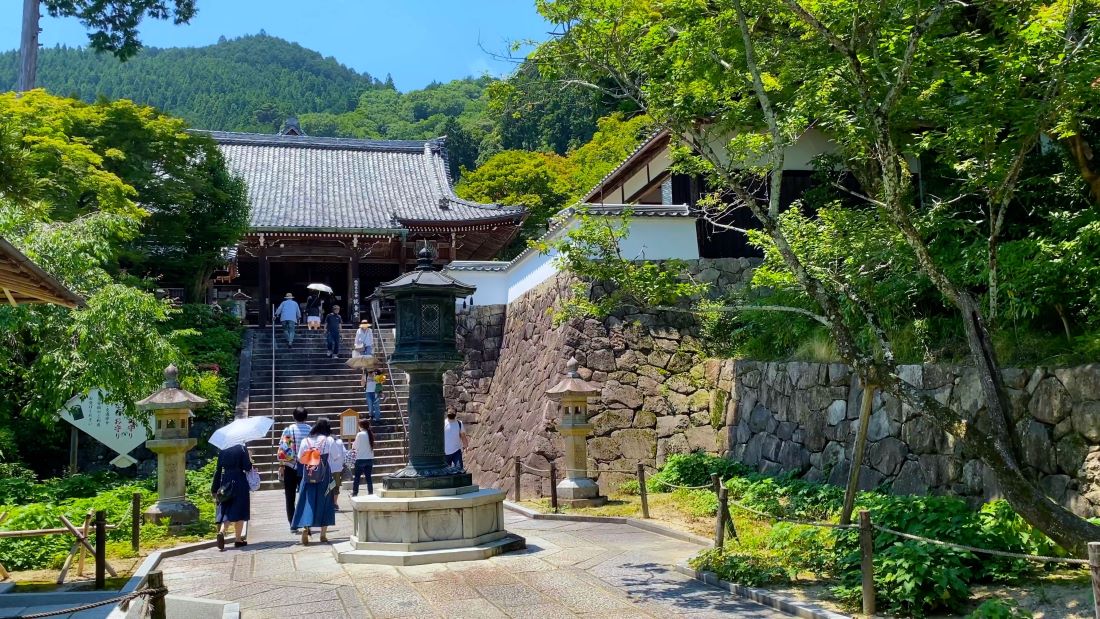
The Temple is renowned for its seasonal offerings, including vibrant autumn colors and cherry blossoms in the spring. You can explore the temple’s various buildings and structures, including the main hall, pagoda, and bell tower. The temple also features a beautiful garden with a pond and waterfall, providing a peaceful and serene atmosphere for meditation and reflection.
Founded in the 10th century, Yoshiminedera Temple has an interesting history and cultural significance in Japan.
It is also the 20th temple of the Saigoku Kannon Pilgrimage, a popular pilgrimage route that includes 33 Buddhist temples in the Kansai region of Japan.
Whether you are a culture buff, a nature lover, or a spiritual seeker, Yoshiminedera Temple should be on your to-do list and offers a memorable experience in the hills of western Kyoto.
History

Yoshiminedera Temple, in the far southwest of Kyoto, was founded in 1029 by Gensan, a scholar priest and disciple of Eshin. The temple was established in this remote location as a retreat for Gensan, who had previously studied at Enryakuji on Mt. Hiei before moving to Yoshiminedera.
According to historical records, Yoshiminedera Temple was designated as an Imperial shrine for protection of the state by Emperor Goichijo Tenno in 1034.
The temple was given the name Yoshimine Temple and expanded under the guidance of subsequent emperors who highly respected it. Emperor Shirakawa constructed the annexed buildings found around the mountain temple’s grounds.

Yoshiminedera Temple is a temple of the Tendai sect of Japanese Buddhism, similar to Kiyomizudera on the opposite side of town.
Built along the mountain side, Yoshiminedera offers some wonderful views of Kyoto. The temple grounds are spacious, and there are many buildings distributed up the mountain side.
One of the unique features of Yoshiminedera Temple is the two unusual statues of Kannon, the goddess of compassion. The Eleven-headed statue of Kannon at the temple is said to be sculpted by Gensan himself, the founder of the temple.
Over the centuries, Yoshiminedera Temple has been a pilgrimage stop for many people. The temple has been cherished by many Japanese people as a place of spiritual healing and as a symbol of Japan’s rich cultural heritage.
Architecture

Yoshiminedera Temple is a beautiful example of Japanese temple architecture. The temple is built along the mountain side, and the buildings are distributed up the mountain.
The spacious temple grounds are surrounded by lush greenery, and the natural surroundings are incorporated into the temple’s design.

The main hall, or hondo, is the most significant building in the temple complex. It houses the temple’s main object of worship, a statue of Yakushi Nyorai, the Buddha of healing.
The hondo is a large building with a thatched roof and a spacious interior. The interior is decorated with beautiful paintings and carvings, and the atmosphere is serene and peaceful.
The temple’s other buildings include a pagoda, a bell tower, and a number of smaller halls and shrines. These buildings are also constructed in the traditional Japanese style, with wooden frames and thatched roofs.
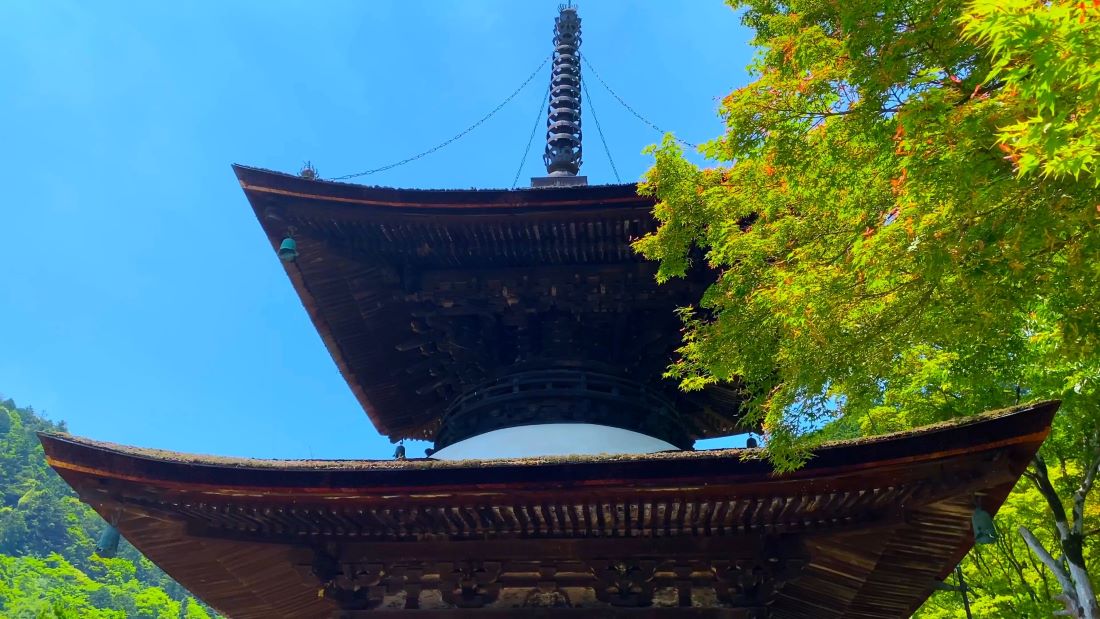
The pagoda is particularly impressive, with its five stories and intricate details. You can climb to the top of the pagoda and enjoy stunning views of the surrounding mountains and Kyoto.
Gardens
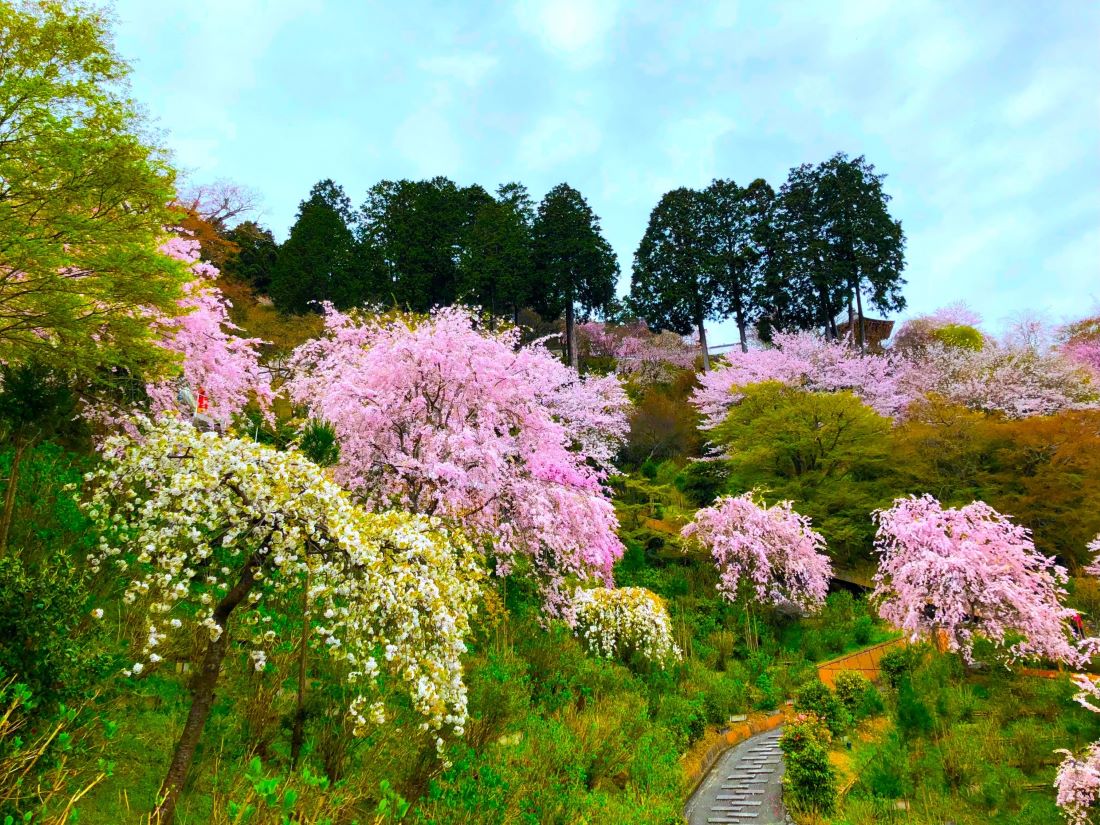
The gardens of Yoshiminedera Temple are a must-see for anyone visiting Kyoto. Designed to complement the natural beauty of the surrounding mountains, the gardens are a peaceful oasis filled with lush greenery and colorful flowers.
You can stroll along winding paths that lead past ponds, waterfalls, and traditional Japanese bridges, taking in the sights and sounds of nature.
One of the highlights of the gardens is the maple trees, which turn brilliant shades of red and orange in the autumn months. You can enjoy the stunning colors while sipping on a cup of hot tea at one of the tea houses throughout the gardens.
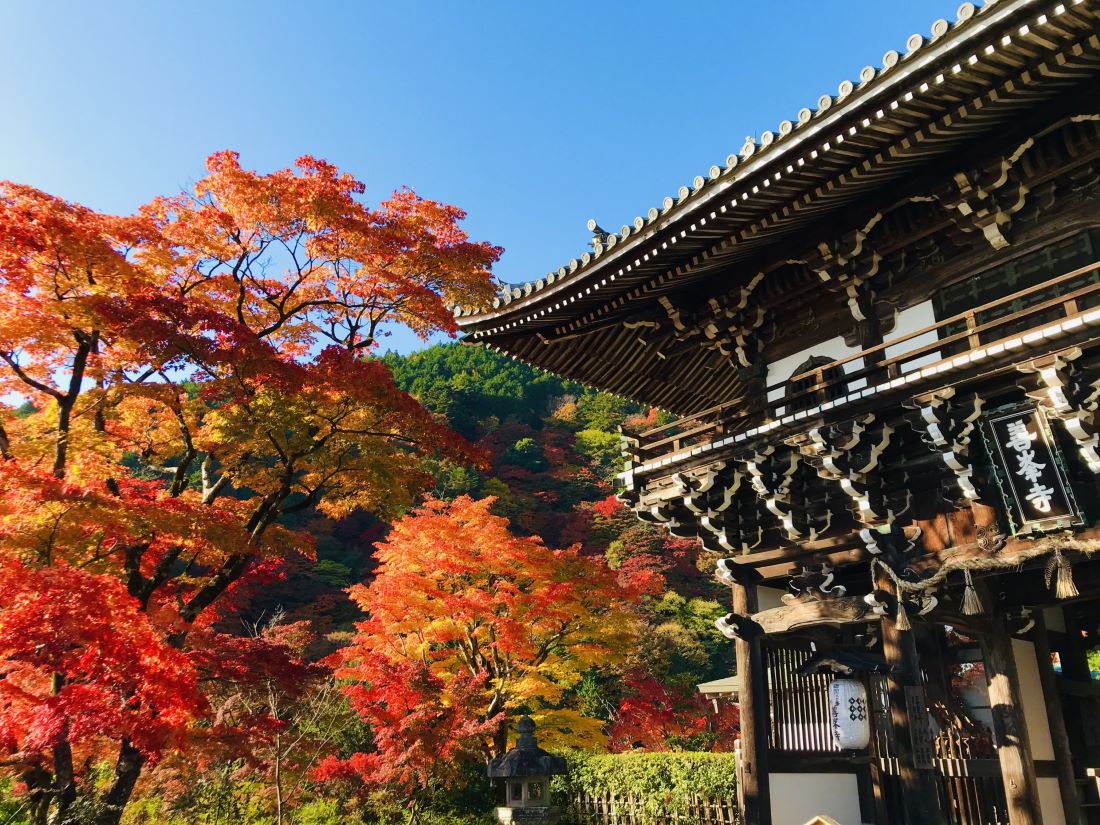
Another notable feature of the gardens is the moss garden, which is considered one of the finest examples of its kind in Japan. The moss is carefully tended to create a serene and tranquil atmosphere, and you can sit on benches and take in the beauty of this unique garden.
Overall, the gardens of Yoshiminedera Temple are a true delight for the senses. Whether you are a nature lover, a history buff, or simply looking for a peaceful escape from the hustle and bustle of the city, the gardens are not to be missed.
Festivals and Events
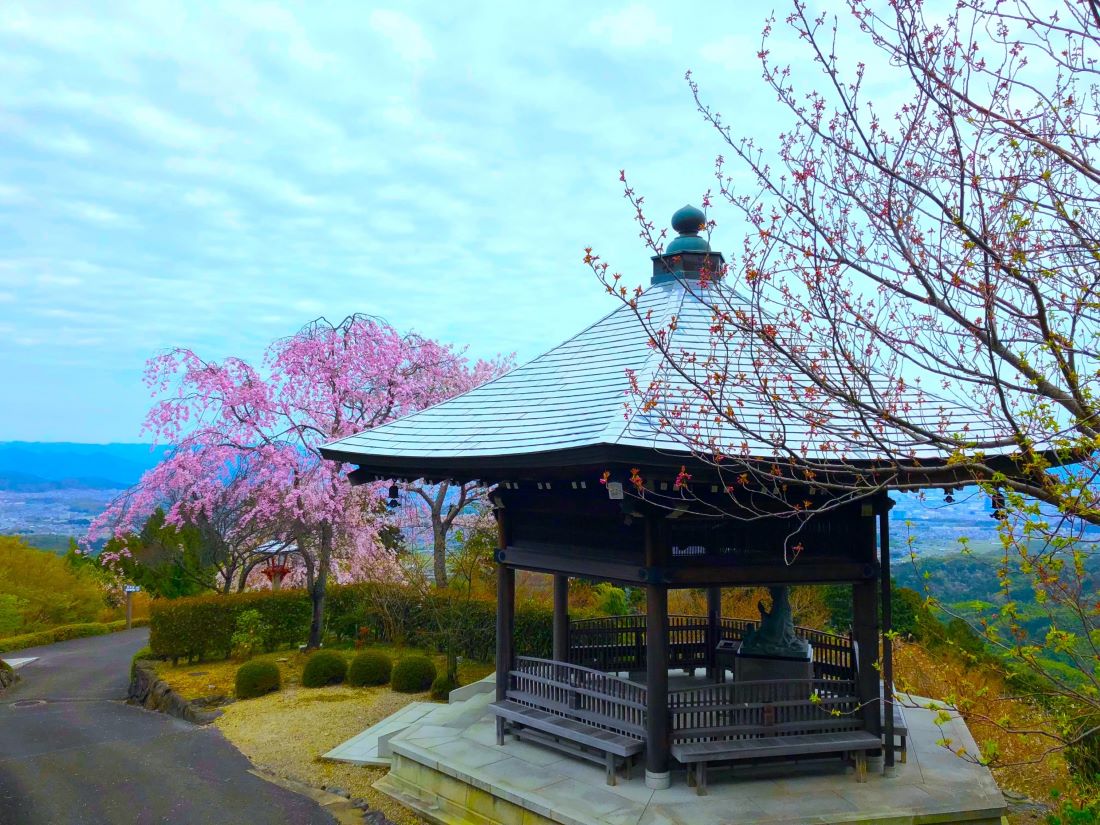
Yoshiminedera Temple hosts several events throughout the year, providing visitors with a unique experience of the temple’s culture and history. Here’s a few of the most popular events:
- Spring Festival: Celebrated in April, the Spring Festival features traditional Japanese performances, including taiko drumming and dance. You can also enjoy the beautiful cherry blossoms that surround the temple.
- Autumn Leaves Festival: Held in November, the Autumn Leaves Festival is one of the most popular events at Yoshiminedera Temple. The temple’s maple trees turn vibrant shades of red and orange, creating a stunning backdrop those to enjoy.
- New Year’s Eve Bell Ringing: On December 31st, you can participate in the temple’s traditional bell ringing ceremony. The ceremony is believed to bring good luck and prosperity for the coming year.
In addition to these events, you can also participate in the temple’s daily rituals, such as morning prayer and meditation. These rituals provide a peaceful and introspective experience those, allowing them to connect with the temple’s spiritual traditions.
Note that event dates and times may be subject to change, so it’s best to check the official Yoshiminedera Temple website for the most up-to-date information. Regardless of the event, visitors are sure to have a memorable and meaningful experience at this historic temple.
Getting There

Getting to Yoshiminedera Temple can be a bit of a challenge, but it’s well worth the effort. Here are a few ways to reach the temple:
By Bus
The easiest way to reach Yoshiminedera Temple is by taking the Hankyu Bus #66 from either Mukomachi Station or Nagaoka Tenjin Station. The journey takes around 30 minutes and costs 390 yen one way. There is only one bus per hour, so be sure to check the schedule in advance.
By Car
If you have a car, you can drive to Yoshiminedera Temple, but be aware that the roads leading to the temple can be narrow and winding. There is a small parking lot near the temple, but it can fill up quickly during peak season.
By Bicycle
If you’re feeling adventurous, you can rent a bicycle and cycle to Yoshiminedera Temple. The journey takes around 45 minutes from central Kyoto, and there are several rental shops in the area.
Whichever method of transportation you choose, be sure to check the temple’s opening hours in advance, as they can vary depending on the season. And don’t forget to bring comfortable shoes, as there are several steep steps to climb to reach the main hall of the temple.
Visiting Tips
Visiting Yoshiminedera Temple can be a bit intimidating, but with these tips, you’ll be able to make the most of your visit.
Getting There
The temple is in Kyoto’s western mountains, so getting there can be a bit of a challenge. The easiest way to get there is by taking a taxi or driving yourself. If you’re feeling adventurous, you can also take a bus and then hike up to the temple.
Time Your Visit
The temple is open year-round, but the best time to visit is during the autumn season when the leaves change colors. The temple is also beautiful during the spring cherry blossom season.
Respect the Temple
As with any temple or religious site, it’s important to be respectful of the surroundings. Be sure to follow the rules and guidelines set forth by the temple, including removing your shoes before entering certain areas and refraining from taking photos in certain locations. Also, keep in mind that this is a place of worship for many people, so be mindful of your behavior and keep noise levels to a minimum.
By following these tips, you’ll be able to make the most of your trip to Yoshiminedera Temple and truly appreciate the beauty and history of this hidden gem in Kyoto’s western mountains.



